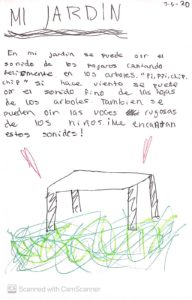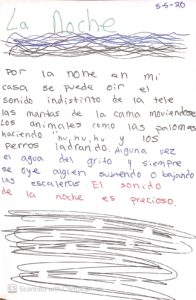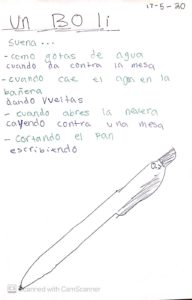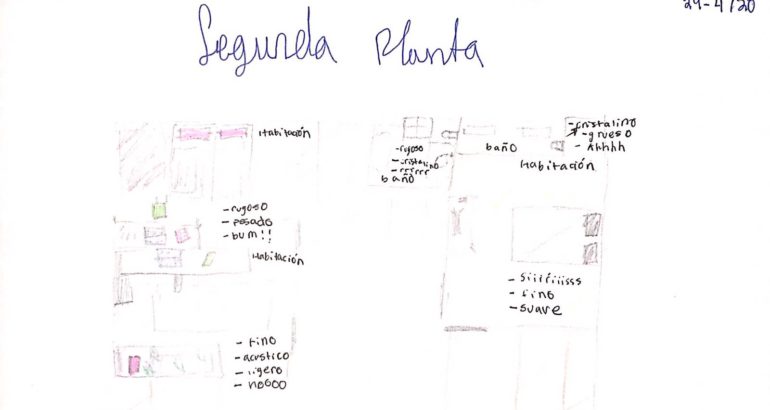
Let the Sound Be: Jugar sin sentido es también una forma de aprender
El compositor americano John Cage describió la música como una forma de “jugar sin sentido”, es decir “una afirmación de la vida y no el intento de traer orden del caos… una simple forma de despertarse a la forma en qué estamos viviendo”.
El propósito fundamental de los talleres Let the Sound Be es que las niñas y los niños conozcan y experimenten diferentes formas de relacionarse con la música y el sonido. Es decir, proponer actividades que persigan una relación con el sonido amplia, sin prejuicios ni jerarquías. Por lo general, la pedagogía musical está centrada en un canon que se corresponde a un contexto histórico, social y cultural específico. Este canon, define cómo debemos acercarnos a la música, analizarla, juzgarla, escucharla, “interpretarla” y/o componerla. Sus prácticas musicales ocupan un espacio amplio y privilegiado en las salas de concierto, auditorios, conservatorios o escuelas de música y tienen un peso fundamental en la forma de pensar y de relacionarnos con experiencias que están fuera de este marco.
¿Quién decide qué es y qué no es música? ¿Cómo describimos y contamos la música? ¿Qué esperamos que suceda en un concierto? ¿Qué “escuchamos” y qué no? ¿Por qué nos molesta cuando alguien se come un caramelo en medio de un concierto? ¿La música hace que seamos mejores personas? ¿Más listas o más inteligentes? ¿Más creativas? En estos talleres, nos preguntamos sobre todas estas cuestiones y las ponemos en práctica para despertar intereses variados en las niñas y los niños.
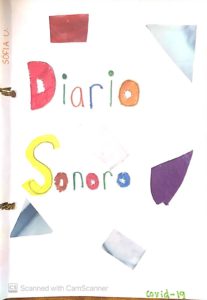
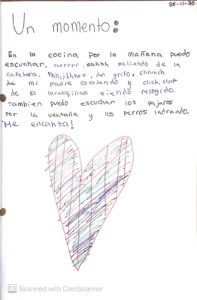
En uno de los talleres que realizamos en la Escuela Municipal Maria Dolores Pradera, construimos un recorrido sonoro: una macropartitura elaborada a partir de plataformas de acciones sonoras y de cintas que marcan itinerarios y ocupan todo el espacio del auditorio. En esta actividad, los participantes son compositores, músicos y públicos al mismo tiempo, desmarcando las diferencias entre cada uno de los perfiles. Todos los procesos suceden al mismo tiempo y la partitura musical se transforma en un conjunto de acciones que van más allá de las notas, las escalas y los pentagramas.
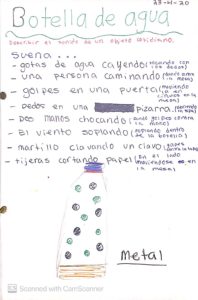
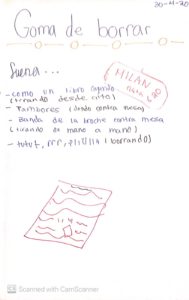
En los talleres, también construimos partituras gráficas, texturales o táctiles, esta última, basada en la obra The Time is a Thread de la compositora Sonia Megías, y las hacemos sonar en conjunto. Esta escritura “alternativa”, permite plasmar procesos de composición cuyos resultados no pueden materializarse a través de la notación convencional, o por lo menos, no de forma sencilla. Lo que sucede a nivel sonoro no puede describirse en términos singulares de altura, intensidad, duración o timbre y por eso buscamos procedimientos, descripciones y formas de escucha variados: planos sonoros, líneas finas o gruesas, bloques, sonidos rugosos, lisos, estridentes, pesados, volátiles, flujos sonoros, etc. En otros talleres, también sonorizamos cuentos y animaciones. Jugamos e improvisamos con el sonido a partir de las imágenes o las palabras. Y mezclamos sonidos de campanas, lijas, copas, timbres, maderas y juguetes de goma con diversas formas de hacer sonar los instrumentos. En definitiva, buscamos actividades que posibiliten escuchar, componer y relacionarnos con la música de formas divertidas y variadas.
Texto escrito por nuestra facilitadora Cristina Cubells
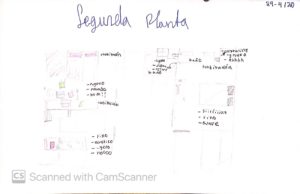
******
Para dar a conocer el trabajo maravilloso que llevamos haciendo en Let the Sound Be, incluimos fotos del diario sonoro creado por Sonia, una alumna de este programa, y un dossier educativo creado por la facilitadora Cristina Cubells.
